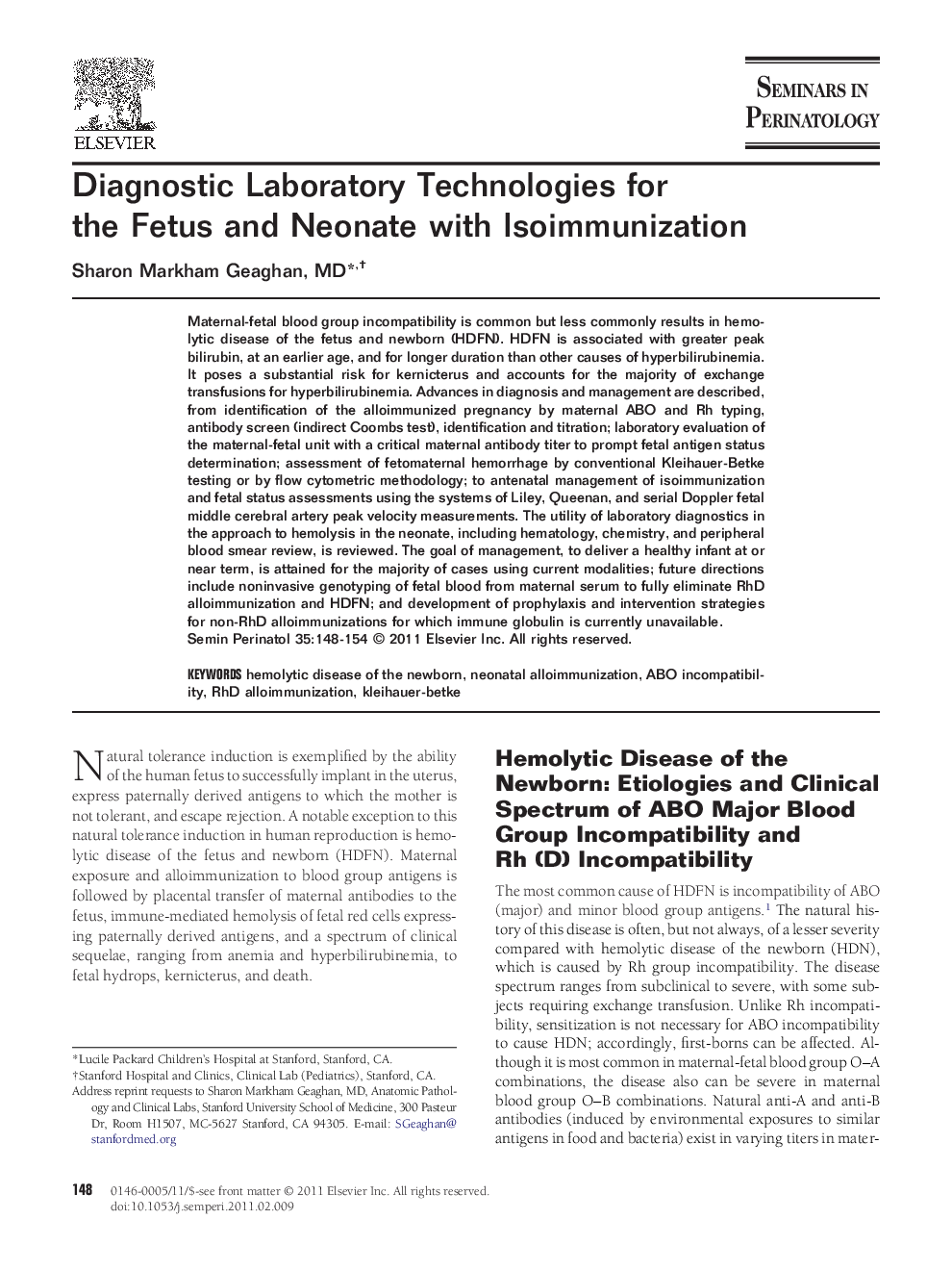| کد مقاله | کد نشریه | سال انتشار | مقاله انگلیسی | نسخه تمام متن |
|---|---|---|---|---|
| 3836531 | 1247545 | 2011 | 7 صفحه PDF | دانلود رایگان |

Maternal-fetal blood group incompatibility is common but less commonly results in hemolytic disease of the fetus and newborn (HDFN). HDFN is associated with greater peak bilirubin, at an earlier age, and for longer duration than other causes of hyperbilirubinemia. It poses a substantial risk for kernicterus and accounts for the majority of exchange transfusions for hyperbilirubinemia. Advances in diagnosis and management are described, from identification of the alloimmunized pregnancy by maternal ABO and Rh typing, antibody screen (indirect Coombs test), identification and titration; laboratory evaluation of the maternal-fetal unit with a critical maternal antibody titer to prompt fetal antigen status determination; assessment of fetomaternal hemorrhage by conventional Kleihauer-Betke testing or by flow cytometric methodology; to antenatal management of isoimmunization and fetal status assessments using the systems of Liley, Queenan, and serial Doppler fetal middle cerebral artery peak velocity measurements. The utility of laboratory diagnostics in the approach to hemolysis in the neonate, including hematology, chemistry, and peripheral blood smear review, is reviewed. The goal of management, to deliver a healthy infant at or near term, is attained for the majority of cases using current modalities; future directions include noninvasive genotyping of fetal blood from maternal serum to fully eliminate RhD alloimmunization and HDFN; and development of prophylaxis and intervention strategies for non-RhD alloimmunizations for which immune globulin is currently unavailable.
Journal: Seminars in Perinatology - Volume 35, Issue 3, June 2011, Pages 148–154